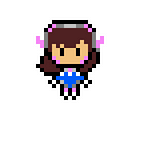I like the author’s point of view in this article very much. He thinks that we should study new technologies from the tradition of artists/designers instead of using more typical scientific and engineering methods. It is not an attempt to objectively ask others’ needs through surveys, but a more impressionistic description of their beliefs and desires, aesthetic preferences and cultural concerns.
In fact, I think this method is very suitable for individual creators/students, because sometimes it is difficult for individuals to analyze a huge group, but we can provide opportunities for people to spontaneously discover new fun and cultural forms for them. This article makes me reflect on the methods used in my past projects. When I was in the company, the positions of designer and user researcher were strictly separated. Our user researcher would do a lot of questionnaires, interviews and tests, and what we get in our hands is a piece of ‘cold’ data. We are more like scientists in the laboratory, applying formulas to these data to get a designed answer. I think the author’s metaphor for the role of the designer “doctor” is very appropriate. We always put users in a stereotype and try to solve their problems, but we missed the opportunity to stimulate the creativity and wonderful imagination of the target group.
Before joining the company’s work, I once had an idea of putting an AR target image on cups in chain coffee shops (this project was also used to apply for Parsons). I tried to solve the problem of Han Chinese cloth culture disappearing in modern Chinese life. After designing the AR animation, I was thinking about what is the best carrier for cultural communication. So I went to the street to observe and I took a lot of photos. I found that people were holding shopping bags, flyers and Milk tea cups, so the idea of making AR target images on Starbucks paper cups came to mind. In this project, I did not use the ‘professional’ research methods I learned in the UX training courses, but chose to directly observe and record these people. In fact, it is somewhat similar to the culture probe. But if I read this article earlier, I think I will have more in-depth contact with these people, and maybe there would be more interesting works. (Unfortunately, after joining the company, I seem to forget such interesting research methods entirely lol
2. Nielsen Normal Group’s When to Use Which User-Experience Research Methods
In the second article, I learned about user experience research methods. When I saw the first picture, I realized that there are some terms that I can’t understand. This also made me realize that the scope of my previous user research was very narrow. I usually used Card Sorting, email surveys and interviews in my previous projects. In the four quadrants given by the author, my research methods focus on the attitudinal at the bottom but I ignore the user’s direct behavioral research. For a complete project, I think this quadrant can help check the aspects that we overlooked in user research.
Question: As students, we might need to do most of the projects by ourselves, working independently. I want to know when personal technical/economic power is limited (such as eye tracking cannot be used in individual projects) and it’s not realistic to get a particularly large sample at the time, what user research methods can help us get more objective and accurate results?
